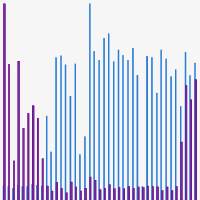Each insert screening assay performed using the Guide-it Knockin Screening Kit involves a set of oligos designed to detect seamless, error-free incorporation of a designated insert sequence at a specific genomic target site. You will need to input (in the 5'→3' orientation) four sequence fragments that correspond to the 5' and 3' junctions of the insert and genomic target site following successful editing. (Please see figure below for further clarification.)
- To generate the oligos to detect the 5' junction:
- Enter the wild-type sequence 5' upstream of the insertion (1)
- Enter the 5' terminal sequence of the insert (2)
- To generate the oligos to detect the 3' junction:
- Enter the 3' terminal sequence of the insert (3)
- Enter the wild-type sequence 3' downstream of the insertion (4)


Please note that the following conditions must be satisfied in order to use the tool successfully:
- Input sequences cannot exceed 1,000 bases
- Input sequences should consist of at least 35 bases
NOTE: Please be careful to avoid the inclusion of extra spaces when inputting sequences, as these will be interpreted as part of the input and will likely return an error message.






